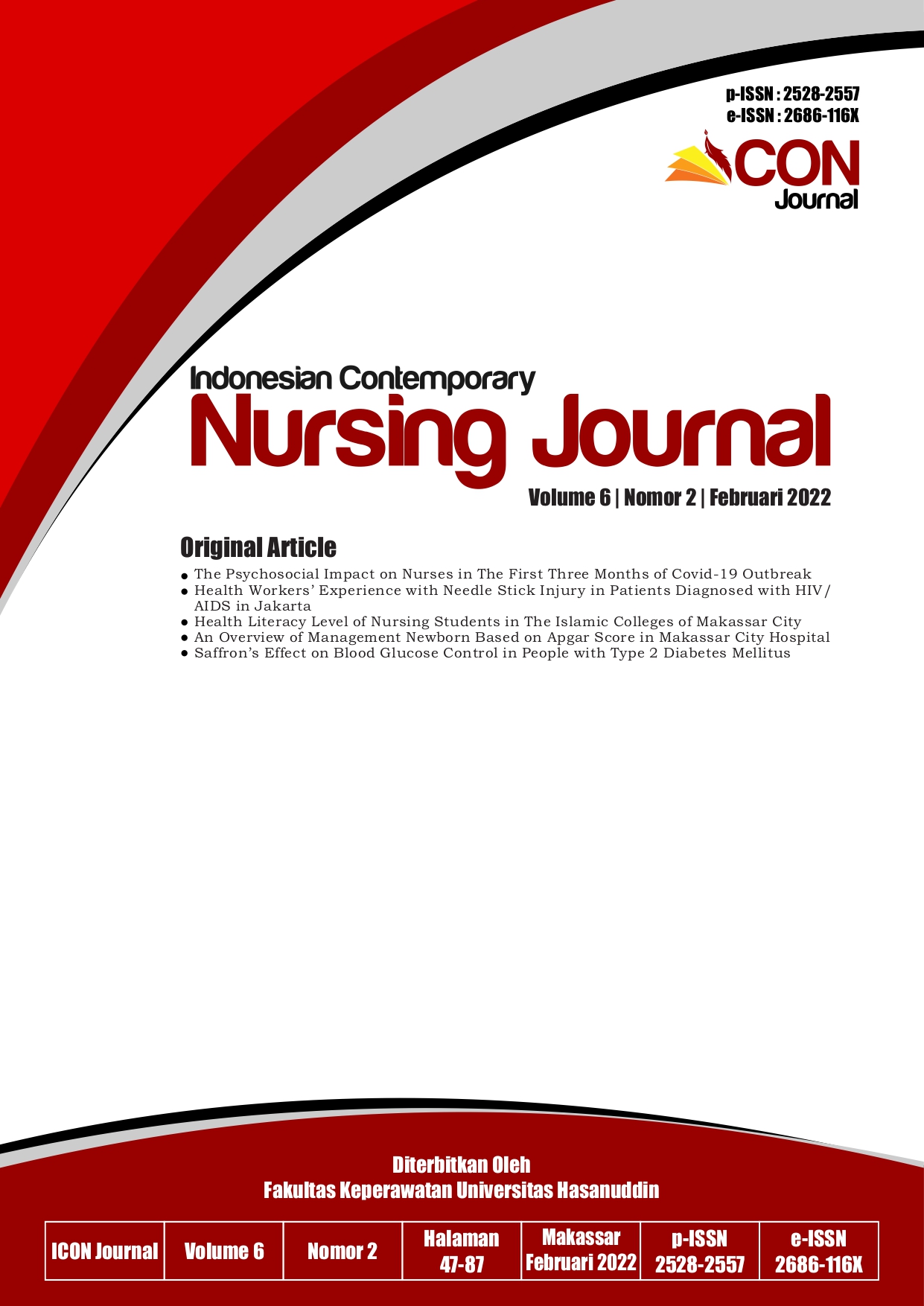Health Workers’ Experience with Needle Stick Injury in Patients Diagnosed with HIV /AIDS in Jakarta
Keywords:
HIV/AIDS, Health Worker, Needle Stick InjuryAbstract
Introduction. HIV/AIDS is a virus that attacks the human immune system. In this case, experience refers to an event felt by a needle-injected healthcare workers with a diagnosis of HIV/ AIDS. Experience is an expression of expectation from healthcare workers to healthcare workers who have not experienced the incidence of needle injecting patients with a diagnosis of HIV/ AIDS. Health worker’s experience who had been pierced by a patient's needle (needle stick injury) would experience psychological effects such as anxiety, irritation, and guilty feelings. In this study, the participants, which are the healthcare workers, were expected to share information about their first experience when being injected with HIV/AIDS contaminated needle. This study aims to give a meaning in the experience of the healthcare workers who were injected with needle from patients with HIV/AIDS. Method. This study used qualitative method with a descriptive phenomenological approach by involving 5 participants, namely healthcare workers who had worked for more than 4 years. Result. The results were obtained by in-depth interviews and analyzed through the Collaizi method using the NVivo application. The results of the study found 3 (three) themes, the first theme is, Response and adaptation of needle injected HIV/ AIDS patients which generated several categories (psychological, spiritual and social responses) and (psychological, spiritual, and social adaptations). The second theme is the effect of having ARV therapy which causes both physical effects and psychological effects. The third theme is the precautionary measures of HIV/AIDS needle-injected, which consist of preventive and rehabilitative actions. Conclusion: Healthcare services have an obligation to provide support and motivation to healthcare workers who experienced the incidence of being injected by needle from patients with a diagnosis of HIV/AIDSDownloads
Download data is not yet available.
Dimensions
Published
2022-02-28
How to Cite
Sianturi, S. R., & Widiani, I. (2022). Health Workers’ Experience with Needle Stick Injury in Patients Diagnosed with HIV /AIDS in Jakarta. Indonesian Contemporary Nursing Journal (ICON Journal), 6(2), 53-61. https://doi.org/10.20956/icon.v6i2.11091
Issue
Section
ARTICLES
Copyright & Licensing
Authors who publish with this journal agree to the following terms:
Authors retain copyright and grant the journal right of first publication with the work simultaneously licensed under a Creative Commons Attribution License that allows others to share the work with an acknowledgement of the work's authorship and initial publication in this journal.
Authors are able to enter into separate, additional contractual arrangements for the non-exclusive distribution of the journal's published version of the work (e.g., post it to an institutional repository or publish it in a book), with an acknowledgement of its initial publication in this journal.
Authors are permitted and encouraged to post their work online (e.g., in institutional repositories or on their website) prior to and during the submission process, as it can lead to productive exchanges, as well as earlier and greater citation of published work (See The Effect of Open Access).
Authors retain copyright and grant the journal right of first publication with the work simultaneously licensed under a Creative Commons Attribution License that allows others to share the work with an acknowledgement of the work's authorship and initial publication in this journal.
Authors are able to enter into separate, additional contractual arrangements for the non-exclusive distribution of the journal's published version of the work (e.g., post it to an institutional repository or publish it in a book), with an acknowledgement of its initial publication in this journal.
Authors are permitted and encouraged to post their work online (e.g., in institutional repositories or on their website) prior to and during the submission process, as it can lead to productive exchanges, as well as earlier and greater citation of published work (See The Effect of Open Access).

